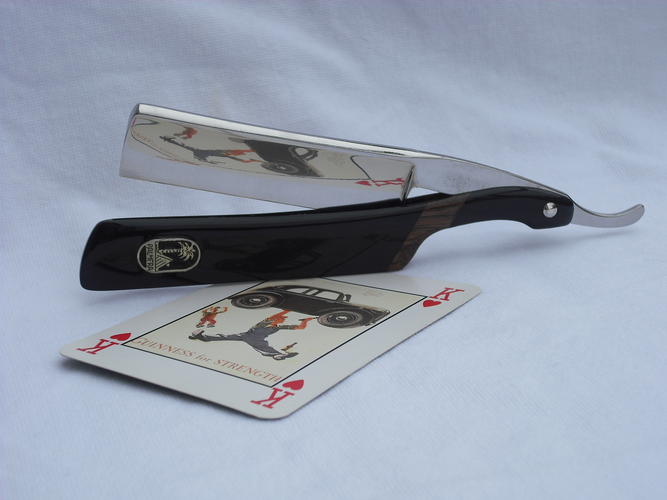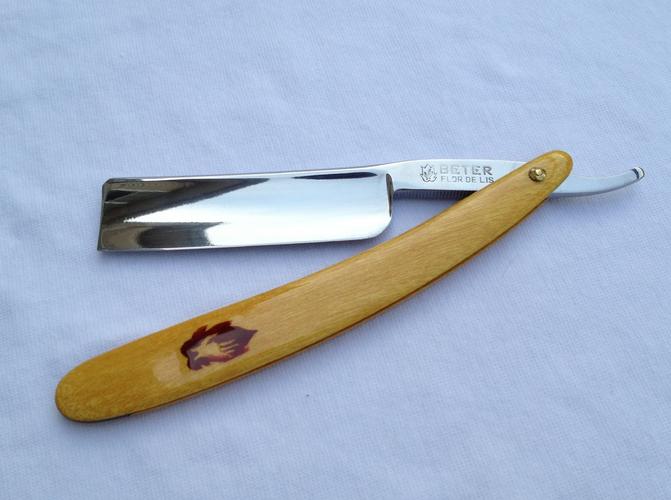Results 11 to 20 of 20
Thread: Tru-oil finish!? Anyone?
-
02-01-2014, 10:55 PM #11

Pretty much the same thing here. Trick I like with porous wood like paduak; save a piece of off cut clean it with acetone or denatured alcohol, use 80 grit paper grind some of the cutoff into a cup, pour true oil in just enough to make a paste, smear it on, wet some 400 wet dry paper with some true oil and start wet standing in small circles. You got homemade wood filler, best part is some woods change color over time like paduak, redheart, bloodwood, purpleheart; so when this happens you're filler ages the same so you don't end up with different tones stuck under your finish you can't get. to. Also I use a one pound cut of blonde shellac between oils and water based stuff, or as a sealer after the trick above then my final finish coats. It works great . use a lite coat, let it dry about two hours lightly do two passes over with 400 grit then start your finish coats. you can pit it on after or between stains or dyes to add depth.
Last edited by tiddle; 02-01-2014 at 10:59 PM.
Mastering implies there is nothing more for you to learn of something... I prefer proficient enough to not totally screw it up.
-
02-02-2014, 09:06 AM #12

It works, when cutting it you could try sth else for cutting it, I use Oranol, it's citrus oil, and smells great, I use it mainly due to its smell and to avoid the aliphatic, gasoline based smells, I usually start with 50% and go up towards 100% oil (with tung oil), hope it helps

-
02-02-2014, 09:17 PM #13
-
02-02-2014, 11:50 PM #1450 year str. shaver


- Join Date
- Aug 2008
- Location
- Pothole County, PA
- Posts
- 2,258
- Blog Entries
- 2
Thanked: 522
I refinished gunstocks for 25 years way back when. Casey's is as good as any and better than many. Oil finish tends to not like heat so don't run hot water over your scales. It will probably soften.
JERRY
OOOPS! Pass the styptic please.
-
02-03-2014, 06:09 AM #15

I got some useful info from this guy; he is a guitar builder, and another video for some ideas on using shellac. The Danish oil video is the same procedure just using true oil, or you can also use tung oil, or wiping varnish; just stay away from brushing or regular varnish...it will leave some hella' streaks (witness lines) and they're VERY difficult to get out (only made that mistake once experimenting luckily).
Danish Oil - YouTube
Coloring Oil Finishes - YouTube
Coloring Oil Finishes Alternate Method - YouTube
Charles Neil on Shellac Presented by Woodcraft - YouTube
Here are some test pieces I did with coloring with paint and true oil. I used black leather dye first; let it dry overnight, then used 220 grit paper to sand all the surface dye off while still leaving most in the grain ( I should have done better prep, but this was cheap basswood to play with). Next I mixed some of the paint with the true oil and started rubbing it in. Now the cabernet color actually was the red that mixed with some of the black and I liked it so I left it alone; the other red I put a coat of shellac between the dye and the oil and paint layer. I used shellac to seal the color in, then you just apply your final finish coats of true oil, varnish, epoxy, ca, or poly. The paint has to dry about a week, but rustoleum makes a oil paint accelerator in a spray can (hobby lobby in the paint and brush and canvas isle). Took my dry time down to 3 days, less if you go liter on the paint. I also did a black dye, shellac, gray, shellac, and marine blue (looked like denim when I was done), but I used it to make a bench strop for Kwilliams on the forum here and epoxied some rough leather and crox so he could try the pasted strop method out on his blades, so I didn't have a pic of that one
Hope this helps some folks and gives some creative ideas. HAVE FUN FELLAS'!


 16Likes
16Likes LinkBack URL
LinkBack URL About LinkBacks
About LinkBacks







 Reply With Quote
Reply With Quote

